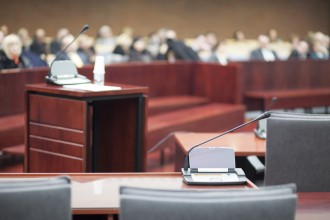September 15, 2015
PTAB Eases Restrictions on Submitting Observations on Cross Examination for Your Own Witness
When a party submits declaration testimony and the opposing party is not entitled to another brief, “observations on cross-examination” are the opposing party’s mechanism for introducing declaration testimony from that witness. Early on, the PTAB determined a party generally is not allowed to submit such observations for its own witnesses. A PTAB panel has now eased this restriction, in Zhongshan Broad Ocean Motor Co. et al. v. NIDEC Motor Corp., IPR2014-01121,-01122 (Sept. 10, 2015) (Paper 34).
There, the Petitioner’s reply briefs cited declaration testimony from Patent Owner’s witness. Patent Owner was not entitled to another brief, so sought to submit observations on cross examination to provide “context” for the deposition testimony. A similar request had been made in Schott Gemtron Corp. v. SSW Holding Co. Inc., IRP2013-00358 (May 16, 2014) (Paper77). In Schott, the panel allowed only very limited observations—e.g., where Petitioner cited the transcript where a witness made a particular statement, but the witness later corrected his testimony and said the opposite.
The Zhongshan panel’s decision was much more favorable to the Patent Owner. The PTAB first noted the Federal Rules of Evidence apply to inter partes reviews. 37 C.F.R. § 42.62(a). FRE 106 directs “[w]hen a writing or recorded statement or part thereof is introduced by a party, an adverse party may require the introduction at that time of any other part or any other writing or recorded statement which ought in fairness to be considered contemporaneously with it.” The Schott decision did not discuss or cite FRE 106. Here, though the Board found FRE 106 requires the context of a witness’s statements ought in fairness to be considered “contemporaneously” when evaluating the witness’s testimony (i.e., when the Board prepares for the oral argument). Based on FRE 106, the Board allowed Patent Owner to file, as an exhibit, a chart identifying portions of the transcript that provide the needed context. The chart could only include page and line numbers—no additional statements or explanations were authorized.


































